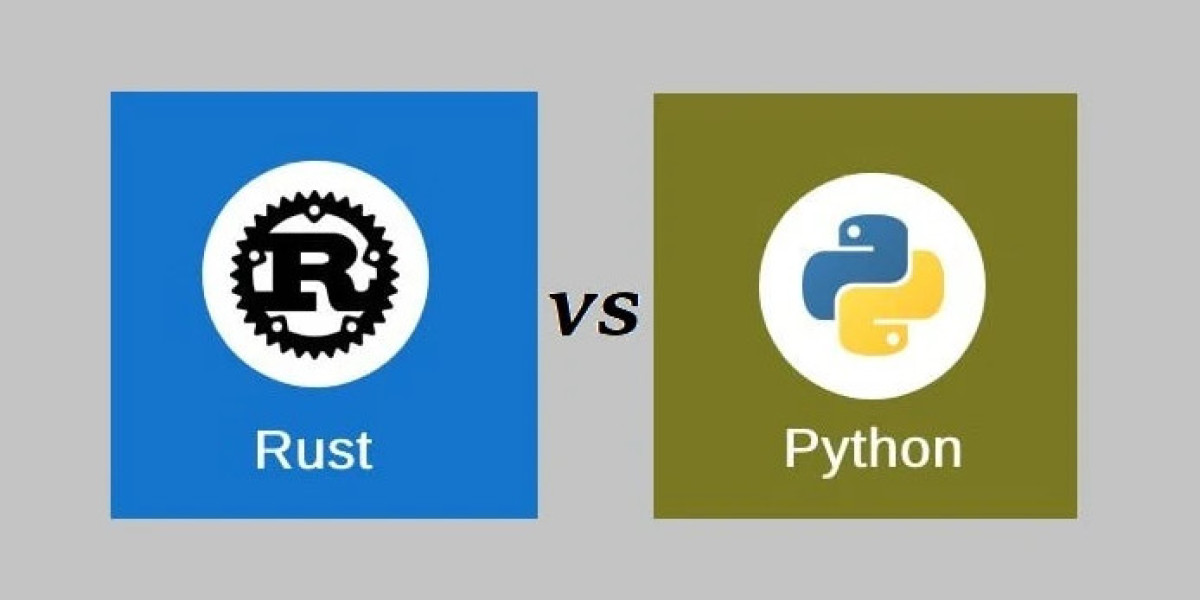Python, on the other hand, is renowned for its simplicity and versatility, making it a top choice for a wide range of applications. In this article, we will explore the key differences and similarities between Rust vs Python, shedding light on their strengths and ideal use cases.
Performance: Rust vs Python in Speed and Efficiency
When we dive into the debate of Rust vs Python, performance is one of the first factors to consider. Rust excels in speed and efficiency, designed to compete with low-level languages like C and C++. It allows for direct memory access, fine-tuning system performance, and avoiding runtime overhead. This makes Rust the go-to language for applications that require high-performance computing, such as operating systems, game engines, and real-time systems.
Python, in contrast, is an interpreted language, which means that its execution speed tends to be slower compared to Rust. Python's design prioritizes developer productivity and ease of use over raw performance. While Python can handle most tasks efficiently, it may struggle with compute-heavy operations without additional optimizations or the use of external libraries like NumPy, which leverage C under the hood.
Memory Management in Rust vs Python
Rust’s memory management is one of its defining features. The language does not rely on garbage collection. Instead, it uses a concept known as ownership with strict rules on borrowing and lifetimes. This enables Rust to handle memory safely and efficiently, preventing memory leaks and data races without needing a garbage collector.
Python, however, uses garbage collection for memory management. While this simplifies development by automatically cleaning up unused objects, it can also introduce performance overhead. The garbage collector periodically pauses the program, which can result in unpredictable performance, especially in large-scale applications.
Multithreading and Concurrency: Rust vs Python
Rust shines when it comes to multithreading and concurrency. Its ownership model ensures that data races are impossible, making it ideal for multi-core systems and highly concurrent applications. The language allows for safe parallelism, making it a top choice for building high-performance, multithreaded software.
In contrast, Python’s Global Interpreter Lock (GIL) restricts true parallelism in multi-threaded applications. While Python can handle concurrency well with asynchronous programming or multi-processing, it is not as naturally suited for concurrent tasks as Rust. For CPU-bound operations, Rust would outperform Python in terms of raw speed and efficiency.
Ease of Use: Rust vs Python for Developers
One of the major points in the Rust vs Python debate is ease of use. Python’s simple syntax and large standard library make it an accessible language for beginners and experienced developers alike. Its dynamic typing and high-level abstractions allow developers to write code quickly, focusing on the logic of the application rather than low-level details. Python’s popularity in fields like web development, data science, and automation is a testament to its usability.
Rust, on the other hand, has a steeper learning curve. Its focus on safety and performance requires developers to understand complex concepts like ownership, borrowing, and lifetimes. While Rust’s syntax is more verbose compared to Python, it offers a high degree of control over system resources, which can lead to more optimized code. Developers who are comfortable with managing memory and understanding low-level systems will appreciate Rust’s capabilities.
Debugging and Error Handling
Python’s error handling is straightforward, relying on exceptions to manage runtime issues. Its dynamic typing can sometimes lead to errors that are only caught during execution, but Python’s friendly error messages help developers debug problems quickly.
Rust’s error handling is more structured, using a result-based system for managing errors. Rust forces developers to explicitly handle errors, making it less likely that bugs will go unnoticed. While this leads to more robust code, it can also increase development time, especially for newcomers.
Community and Documentation
Python has one of the largest and most active programming communities in the world. This means that developers can easily find support, tutorials, and resources when learning or working with Python. The extensive documentation and third-party libraries further enhance its appeal.
Rust, while younger, has a passionate and growing community. The language’s official documentation is highly praised for being comprehensive and beginner-friendly. However, due to its relative newness, developers may encounter fewer resources compared to Python when seeking solutions to specific problems.
Use Cases: Rust vs Python in the Real World
The decision between Rust vs Python often comes down to the specific use case. Python is widely used for web development, machine learning, data analysis, scripting, and automation. Its extensive ecosystem of libraries, such as Django, Flask, Pandas, and TensorFlow, make it the language of choice for projects in these areas.
Rust is ideal for performance-critical applications. It is commonly used in systems programming, game development, blockchain technologies, and embedded systems. Rust is gaining traction in areas traditionally dominated by C and C++, offering a safer alternative without compromising performance.
Rust in Systems Programming
Rust is particularly suited for systems programming, where low-level access to hardware and memory is required. It can replace languages like C and C++ in tasks that demand speed, reliability, and safety. Operating systems, device drivers, and network protocols are just a few examples where Rust excels.
Python in Data Science and AI
Python’s rise in data science and artificial intelligence is undeniable. Libraries like NumPy, SciPy, and TensorFlow make it the go-to language for machine learning, deep learning, and data analysis. Its ease of use and extensive support in the data science ecosystem make Python the preferred choice in these fields.
Conclusion: Choosing Between Rust vs Python
In the end, the decision between Rust vs Python comes down to what you value most in your programming projects. If speed, control, and memory safety are your top priorities, Rust is the clear choice. It offers a high level of performance without compromising safety, making it ideal for building low-level systems and high-performance applications.
Python, however, remains unbeatable when it comes to simplicity, versatility, and developer productivity. Its vast ecosystem of libraries makes it a top choice for web development, data science, automation, and scripting.
By understanding the strengths and weaknesses of each language, you can make an informed decision that best suits your project’s needs. Whether you choose Rust or Python, both languages are powerful in their own right and offer unique advantages that can elevate your programming endeavors.








